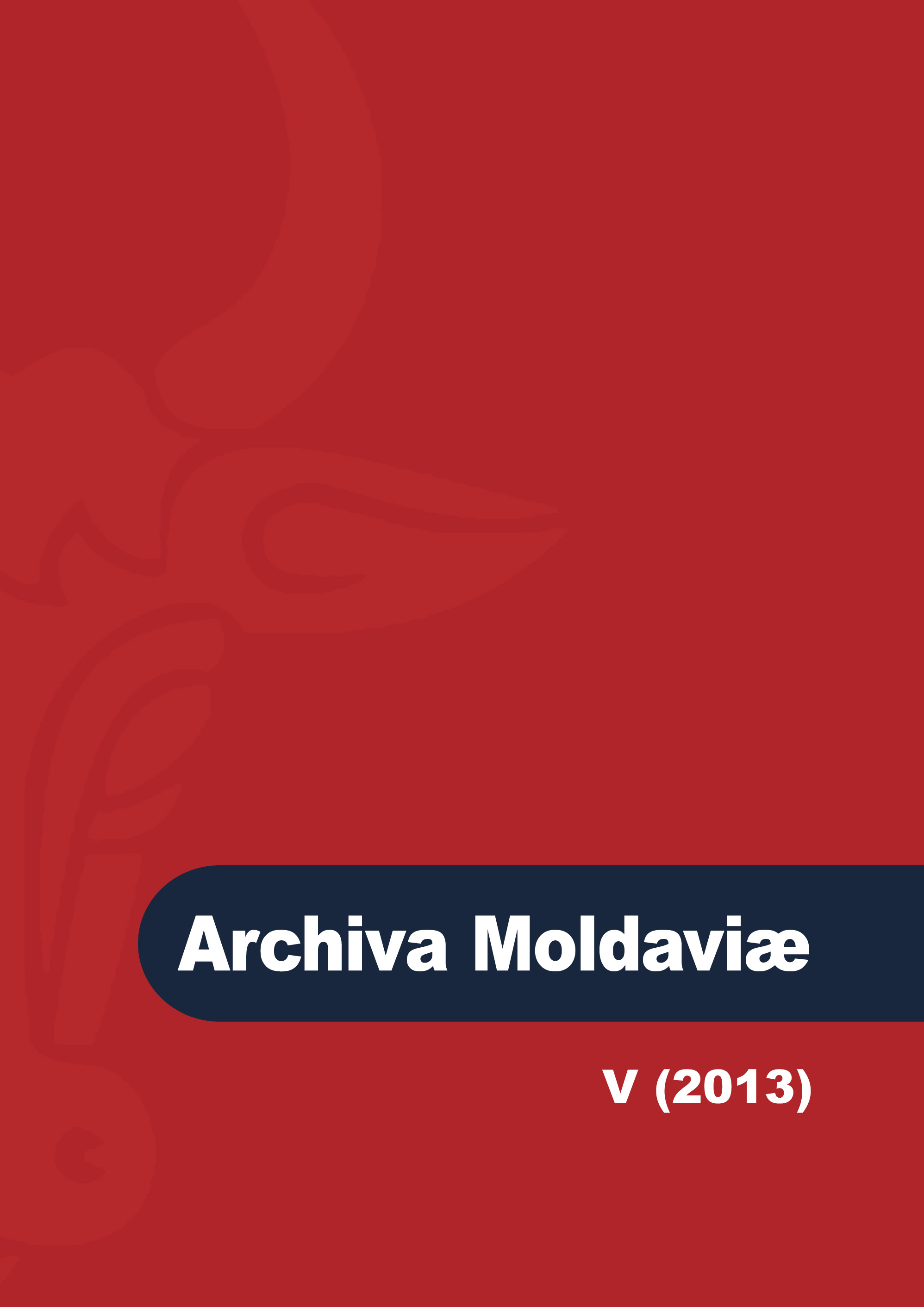Preoţii romano-catolici din Moldova la începutul Războiului Rece. Implicaţiile „Luptei pentru Pace” în cadrul Diecezei de Iaşi
The Roman-Catholic Priests of Moldavia during the early Cold War. The Implications of the „Fight for Peace” Campaign on the Diocese of Iaşi
Author(s): Andrei PuiuSubject(s): History, Local History / Microhistory, Post-War period (1950 - 1989), History of Religion
Published by: Societatea de Studii Istorice din România
Keywords: Roman-Catholic; Moldavia; „Fight for Peace”; Cold War; priests; collaboration; Gerald Patrick O`Hara; Anton Durcovici.
Summary/Abstract: The subject of the present study falls into the relationship between the communist state of Romania versus the Roman-Catholic Church during the early Cold War era. In his period, as suggested by the Soviet Union, the communist political leadership from Bucharest tried to approach the Roman-Catholic church issue by submitting the latin catholic rite towards state authority. This could be done through the ending of any type of contacts between the local catholic churches of Romania and the Vatican, on the ground that the pope is allegedly posed in the service of the imperialistic bloc, championed by the United States. Thus, following the communist political logic, the roman-catholic priests were obliged to recant themselves from the pope, as he was described just as being the „imperialistic” tool inside the socialist bloc. Furthermore, the roman catholic-priests were forced into a plan – designed and strictly supervised by the authorities – that considered the formation of a so called „National” Roman-Catholic Church. This institution was intentioned to follow the political regime by every means. Covered by the national propagandistic „Fight for Peace” campaign, the cooptation operation launched by the authorities over the roman-catholic priests of Moldavia was prepared by a few vital steps. First, the communist leadership issued a series of laws that were designed to break the canonicall functioning of the Roman-Catholic cult. This was backed up by a fiercely press campaign who placed the pope, the Vatican and the Romanian roman-catholic bishops only in negative and dangerous postures. But before the final launching of the „national” roman-catholic church project by the state, the authorities had to deal with the presence of the influential bishop of the Diocese of Iaşi, Anton Durcovici. In his effort to maintain the identical frame of the catholics from Moldova, Durcovici explicitly banned contacts of any nature between clergy and laymen from Moldova versus state power. This measure, however, caused the arrest of Bishop Anton Durcovici in 1949. The cooptation strategy drawn by the authorities in order to gain Moldavian priests adherents for the “national” catholic church proved to be quite complex. It involved combined efforts emerged from the Ministry of Cults and his clerks (wich were supposed to assure the connection between the cults and the central authority at the local level), other propagandistic associations, including forces of repression. Formally speaking, the operation as a whole was officially represented by a „puppet” institution and his leader – priest Endre Agotha –, named „The Catholic Committee for Action for Peace”. The joint action of these elements supposed to provide as many roman-catholic clergy as possible for the creation of the „national” church by the regime. The authorities assault on the catholics from Moldavia faced a fierced opposition led by the eparchial administrators of the Diocese of Iaşi. Cleric Marcu Glaser for instance, refused repeatedly to cooperate in the “fight for peace action” matters – that is to say the formation of a “national” catholic church that had no important connection with the Holly See. For his actions, the Securitate interrogated Glasser. The hard tone of the inquiries caused Marcu Glaser a hard attack. The priests of Moldavia represented a big stake for the communist authorities back in Bucharest. At the national level, they were majoritary by number. But reason of great concerne was given by the Franciscan order development within wich lots of moldavian priest were prepared. After Glaser, cleric Gheorghe Petz was appointed as eparchial administrator of the Diocese of Iaşi. In this stage however, the authorities launched detailed inspections within every parish of the diocese; all under the „fight for peace” veil. Despite obstacles and difficulties raised by the communist authorities, Gheorghe Petz and his clergymen achieved to follow the line issued by bishop Durcovici of noncooperation with the political power, but with enormous costs, because for his actions Petz also faced retaining. In similar circumstances (and aftermaths) with fellow Gheorghe Petz, cleric Wilhelhm Clofanda brought his contribution as leader of the Diocese of Iaşi until his arrest in 1951. After the event, the catholic life of Moldova turned into almost gloom: a large number of priests and laymen faced detention in communist prisons, the contact with the Vatican was inexistent, the diocese was penetrated by a number of opportunists priests. Given the fragile state of the Diocese of Iaşi, the authorities forced Petru Pleşca, the new eparchial administrator appointed, to be a dialogue partner. Worried about the general state in catholic Moldavia, the regime intended to merge the Diocese of Iaşi with the Archdiocese of Bucharest, represented by the opportunist cleric Stanislau Iovanelli. Only under this „politicised” conditions, Pleşca could continue his activity at Iaşi, where he was also obliged to conform with the appointing of some opportunists clerics at the leadership of the component deanery`s of the diocese. Forced by the hostile context, Petru Pleşca accepted and reshaped as much as possible this compromise, in order to provide the functionality context of the Diocese of Iaşi in its relations with the communist state.
Journal: Archiva Moldaviae
- Issue Year: V/2013
- Issue No: 5
- Page Range: 303-334
- Page Count: 32
- Language: Romanian

